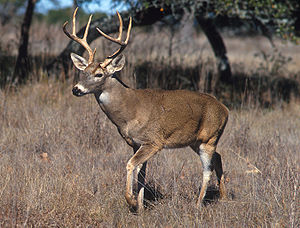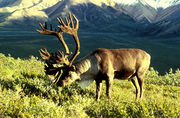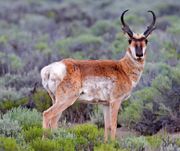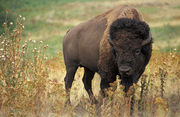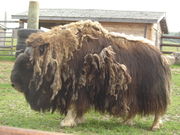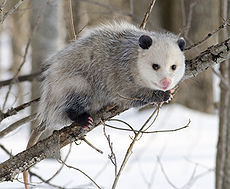List of mammals of Canada
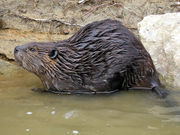
This is a list of the mammal species recorded in Canada. There are approximatively 200 mammal species native to Canada. Its large territorial size and variety of ecosystems, ranging from mountains to plains to urban housing, mean that Canada can harbour a great variety of species, including nearly half of the known cetaceans. The most well-represented order is that of the rodents, and the smallest that of the Didelphimorphia (common opossums).
Studies of mammals in Canada hearken back to the 1795 northern explorations of Samuel Hearne, whose account is considered surprisingly accurate. The first seminal work on Canadian mammals, however, was John Richardson's 1829 Fauna Boreali-Americana. Joseph Burr Tyrrell was the first to attempt to produce, in 1888, a comprehensive list of Canadian mammalian species. Ernest Thompson Seton and Charles-Eusèbe Dionne's work were also important. Modern Canadian publications with interest in mammalogy include The Canadian Field Naturalist, the Canadian Journal of Zoology and the French-language Le Naturaliste Canadien.[A]
Several species of mammal have particular symbolism. The Canadian Horse and Beaver are official symbols of Canada,[B] and several provinces have designated native species as symbols.
Order Rodentia: Rodents
Rodents make up the largest order of mammals, with over 40 percent of mammalian species. They have two incisors in the upper and lower jaw which grow continually and must be kept short by gnawing. Most rodents are small though the capybara can weigh up to 45 kg (100 lb).
| Common name
(French name) |
Species
(Authority) |
Preferred habitat | Native range | Status[1] |
|---|---|---|---|---|
| Family Erethizontidae: New World porcupines | ||||
| North American Porcupine
|
Erethizon dorsatum (Linnaeus, 1758) |
Forests | South of the tree line |
|
| Family Aplodontiidae: The Mountain Beaver | ||||
| Mountain Beaver
|
Aplodontia rufa (Rafinesque, 1817) |
Montane forests | Southern British Columbia |
|
| Family Castoridae: Beavers | ||||
| American Beaver
(Castor) |
Castor canadensis (Kuhl, 1820) |
Humid areas of forests. | All of Canada below the tree line except drier parts of the Prairies |
|
| Family Sciuridae: Squirrels | ||||
| Eastern Gray Squirrel
|
Sciurus carolinensis (Gmelin, 1788) |
Prefers deep forests, but frequent in urban areas. | Southern Manitoba and northwestern Ontario, southern Quebec, Ontario and New Brunswick. |
|
| Eastern Fox Squirrel
|
Sciurus niger (Linnaeus, 1758) |
Edge of forests and groves | Southern Manitoba and Saskatchewan, British Columbia and Pelee Island |
|
| Douglas Squirrel
|
Tamiasciurus douglasii (Bachman, 1839) |
Coniferous forests | Southwestern British Columbia |
|
| American Red Squirrel
|
Tamiasciurus hudsonicus (Erxleben, 1839) |
Forests | Mainland Canada south of the Tree line, except the southern prairies and souwestern British Columbia; Prince Edward, Vancouver and Cape Breton Islands. |
|
| Northern flying squirrel
|
Glaucomys sabrinus (Shaw, 1801) |
Boreal forest | Mainland Canada south of the tree line except the southern Prairies, Prince Edward and Cape Breton Islands |
|
| Southern flying squirrel
|
Glaucomys volans (Linnaeus, 1758) |
Deciduous forests | Southern Ontario, part of Quebec, southern Nova Scotia |
|
| Black-tailed Prairie Dog
|
Cynomys ludovicianus (Ord, 1815) |
Dry prairies | Small part of southern Saskatchewan |
|
| Hoary Marmot
|
Marmota caligata (Eschscholtz, 1829) |
Alpine tundra | Rockies, Columbia, and Coast Mountains |
|
| Yellow-bellied Marmot
|
Marmota flaviventrisa (Audubon and Bachman, 1841) |
Mountains | Central British Columbia and southernmost Alberta |
|
| Groundhog
|
Marmota monax (Linnaeus, 1758) |
Broken ground | Much of mainland Canada west of the Rockies, inland valleys and part western Yukon |
|
| Vancouver Island Marmot
(Marmotte de Vancouver) |
Marmota vancouverensis (Swarth, 1911) |
Near the mountain tree line | Vancouver Island |
|
| Columbian Ground Squirrel
(Spermophile du Columbia) |
Spermophilus columbianus (Ord, 1815) |
Montane open areas | Southern Rocky mountains |
|
| Franklin's ground squirrel
|
Spermophilus franklinii (Ord, 1815) |
Parklands | Northwestern Ontario and southern Prairies except short-grass prairies |
|
| Golden-mantled Ground Squirrel
|
Spermophilus lateralis (Say, 1823) |
Montane coniferous forests | Southeastern Rockies |
|
| Arctic Ground Squirrel
|
Spermophilus parryii (Richardson, 1825) |
Tundra without permafrost | Mainland Arctic |
|
| Richardson's Ground Squirrel
|
Spermophilus richardsonii (Sabine, 1822) |
Prairies | South of the Prairie provinces |
|
| Cascade Golden-mantled Ground Squirrel
|
Spermophilus saturatus (Rhoads, 1895) |
Southern British Columbia Cascade Range | British Columbia |
|
| Thirteen-lined Ground Squirrel
(Spermophile rayé) |
Spermophilus tridecemlineatus (Mitchill, 1821) |
Groves, swamps, uncultivated land | Southern Prairie Provinces |
|
| Yellow-pine Chipmunk
(Tamia amène) |
Tamias amoenus (Allen, 1821) |
Dry montane forests | Southern and central British Columbia and Alberta |
|
| Least Chipmunk
|
Tamias minimus (Bachman, 1839) |
Edges of forests, groves, but also open spaces | Western Quebec to Yukon |
|
| Red-tailed Chipmunk
(Tamia à queue rousse) |
Tamias ruficaudus (A. H. Howell, 1839) |
High altitude forests and valley pine groves. | Southern British Columbia and Alberta |
|
| Eastern Chipmunk
|
Tamias striatus (Linnaeus, 1758) |
Deciduous forests | Southern half of Ontario and Quebec, and southern Manitoba |
|
| Townsend's Chipmunk
(Tamia de Townsend) |
Tamias townsendii (Bachman, 1839) |
Western Coast lowland and montane Tsuga forests | Southwestern British Columbia |
|
| Family Geomyidae: Pocket gophers | ||||
| Plains Pocket Gopher
|
Geomys bursarius (Shaw, 1800) |
Fields and banks | Southern Manitoba |
|
| Northern Pocket Gopher
|
Thomomys talpoides (Richardson, 1828) |
Open areas | Southern Prairie Provinces and British Columbia |
|
| Family Heteromyidae: Heteromyids | ||||
| Ord's Kangaroo Rat
(Rat-kangourou d'Ord) |
Dipodomys ordii (Woodhouse, 1853) |
Semi-deserctic areas | Great Sand Hills area |
|
| Olive-backed Pocket Mouse
(Souris à abajoues des plaines) |
Perognathus fasciatus (Wied-Neuwied, 1839) |
Dry plains | Southern prairies |
|
| Great Basin Pocket Mouse
(Souris à abajoues des pinèdes) |
Perognathus parvus (Peale, 1848) |
Dry plains | Great Basin |
|
| Family Dipodidae: Jerboas | ||||
| Woodland jumping mouse
|
Napaeozapus insignis (Miller, 1891) |
Forest streams | Eastern Canada |
|
| Meadow jumping mouse
|
Zapus hudsonius (Zimmermann, 1780) |
Wet fields | Eastern Canada (except Anticosti island and Newfoundland) to Yukon |
|
| Western Jumping Mouse
(Souris sauteuse de l'ouest) |
Zapus princeps (Allen, 1893) |
Prairies | Rockies and Prairies |
|
| Pacific Jumping Mouse
(Souris sauteuse du Pacifique) |
Zapus trinotatus (Rhoads, 1893) |
Montane prairies | Southwestern British Columbia |
|
| Family Cricetidae: Cricetids | ||||
| Southern Red-backed Vole
|
Clethrionomys gapperi[5] (Vigors, 1830) |
Forests | Most of the provinces, except Newfoundland and Vancouver Island |
|
| Southern Red-backed Vole
(Campagnol à dos roux boréal) |
Clethrionomys rutilus[5] (Pallas, 1779) |
Shrubby tundra | Mainland Arctic |
|
| Northern Collared Lemming
(Lemming variable)[6] |
Dicrostonyx groenlandicus[7] (Traill, 1823) |
Tundra | Northern Arctic islands |
|
| Ungava Collared Lemming
(Lemming d'Ungava) |
Dicrostonyx hudsonius (Pallas, 1778) |
Tundra | Northern Quebec |
|
| Victoria Collared Lemming
(—) |
Dicrostonyx kilangmiutak[7] (Anderson & Rand, 1945) |
Tundra | Mainland Arctic, Banks, Victoria and King Williams Islands |
|
| Ogilvie Mountains Collared Lemming
(—) |
Dicrostonyx nunatakensis[7] (Youngman, 1967) |
Montane tundra | Ogilvie Mountains |
|
| Richardson's Collared Lemming
(—) |
Dicrostonyx richardsoni (Merriam, 1900) |
Tundra | Arctic, roughly south of the Thelon River Basin |
|
| Sagebrush Vole
(Campagnol des sauges) |
Lemmiscus curtatus (Cope, 1868) |
Sagebrush steppes | Southern Alberta and Saskatchewan |
|
| North American Brown Lemming
|
Lemmus trimucronatus (Richardson, 1825) |
|
||
| Rock Vole
(Campagnol des rochers) |
Microtus chrotorrhinus (Miller, 1894) |
Rocky areas | Boreal Ontario and Quebec; southernmost Labrador; Gaspesia and northern New brunswick |
|
| Long-tailed Vole
(Campagnol longicaude) |
Microtus longicaudus (Miller, 1894) |
Varied | Western Cordillera |
|
| Singing Vole
|
Microtus miurus (Osgood, 1901) |
Alpine tundra | Yukon and neighbouring Northwest Territory. |
|
| Montane Vole
(Campagnol montagnard) |
Microtus montanus (Peale, 1848) |
Shortgrass alpine prairies | Central south British Columbia |
|
| Prairie Vole
|
Microtus ochrogaster (Wagner, 1842) |
Prairies | Prairie provinces |
|
| Tundra Vole
|
Microtus oeconomus (Pallas, 1776) |
Wet tundra | Western Arctic |
|
| Creeping Vole
(Campagnol de l'oregon) |
Microtus oregoni (Bachman, 1839) |
Humid coniferous forest | Southern British Columbia |
|
| Meadow Vole
|
Microtus pennsylvanicus (Ord, 1815) |
Wet fields | All of Canada except Arctic and westernmost ranges |
|
| Woodland Vole
|
Microtus pinetorum (Le Conte, 1830) |
Deciduous forests | Southernmost Ontario and Quebec |
|
| Water Vole
(Campagnol de Richardson) |
Microtus richardsoni (De Kay, 1842) |
Alpine prairies and streams | Cascades and southern Rockies |
|
| Townsend's Vole
(Campagnol de Townsend) |
Microtus townsendii (Bachman, 1839) |
Saline marshes and fields | Vancouver Island, nearby islands and Fraser River delta |
|
| Taiga Vole
(Campagnol à joues jaunes) |
Microtus xanthognathus (Leach, 1815) |
Forest streams | From southwester Hudson Bay through northern Prairies and Yukon |
|
| Muskrat
|
Ondatra zibethicus (Linnaeus, 1766) |
Wetlands | Most of Canada outside the Arctic and southwestern British Columbia |
|
| Western Heather Vole
(Campagnol des bruyères) |
Phenacomys intermedius (Merriam, 1889) |
Varied | British COlumbia |
|
| Eastern Heather Vole
(Phénacomys d'Ungava) |
Phenacomys ungava (Merriam, 1889) |
Varied | Quebec, Ontario and Labrador to southern Yukon |
|
| Northern Bog Lemming
(Campagnol-lemming boréal) |
Synaptomys borealis (Richardson, 1828) |
Peatlands | Labrador to Alaska; Gaspesia and northern New Brunswick |
|
| Southern Bog Lemming
(Campagnol-lemming de Cooper) |
Synaptomys cooperi (Baird, 1857) |
Peatlands | Western Manitoba, central and southern Ontario and Quebec, New Brunswick, Nova Scotia |
|
| Bushy-tailed Woodrat
|
Neotoma cinerea (Ord, 1815) |
Mountains | Western Cordillera |
|
| Northwestern Deer Mouse
(—) |
Peromyscus keeni[9] (Rhoades, 1894) |
mild a rainy forests | West of the Coastal Mountains |
|
| White-footed Mouse
|
Peromyscus leucopus (Rafinesque, 1818) |
Deciduous forests | Southern Alberta, Saskatchewan, Ontario, Quebec and Nova Scotia |
|
| Deer mouse
|
Peromyscus maniculatus (Wagner, 1845) |
Anywhere except wetlands | Much of Canada south of the tree line except Newfoundland |
|
| Western Harvest Mouse
|
Reithrodontomys megalotis (Baird, 1858) |
Prairies | Okanagan Valley (ssp. dychei), south of Alberta and Saskatchewann (ssp. megalotis) |
|
| Northern Grasshopper Mouse
(Souris à sauterelles) |
Onychomys leucogaster (Wied-Neuwied, 1841) |
Southern Prairies | Prairies |
|
Order Lagomorpha: Lagomorphs
The lagomorphs comprise two families, Leporidae (hares and rabbits), and Ochotonidae (pikas). They can resemble rodents, but differ in a number of physical characteristics, such as having four incisors in the upper jaw rather than two.
| Common name
(French name) |
Species
(Authority) |
Preferred habitat | Native range | Status[1] |
|---|---|---|---|---|
| Family Ochotonidae: Pikas | ||||
| Collared Pika
|
Ochotona collaris (Nelson, 1893) |
Mountains above the tree line | Rockies of the Yukon |
|
| American Pika
|
Ochotona princeps (Richardson, 1828) |
Mountains near the tree line | Southern British Columbia and Alberta |
|
| Family Leporidae: Rabbits and hares | ||||
| Eastern Cottontail
|
Sylvilagus floridanus (J. A. Allen, 1890) |
Open woodlands | Southern Manitoba, Saskatchewan Ontario and Quebec | |
| Mountain Cottontail
(Lapin de Nuttall) |
Sylvilagus nuttallii (J. A. Allen, 1890) |
Dry plains | Southern Alberta and Saskatchewan, Okanagan and Similkameen valleys. |
|
| Snowshoe Hare
|
Lepus americanus (Erxleben, 1777) |
Forest and marshes | Much of mainland Canada except southernmost Ontario |
|
| Arctic Hare
|
Lepus arcticus (Ross, 1819) |
Tundra | Canadian Arctic (including Arctic Archipelago), Labrador, Newfoundland |
|
| White-tailed Jackrabbit
|
Lepus townsendii (Bachman, 1839) |
Fields | Southern prairies, Okanagan Valley |
|
Order Soricomorpha: Shrews and moles
Soricomorphs are insectivorous mammals. Shrews closely resemble mice while moles are stout-bodied burrowers.
| Common name
(French name) |
Species
(Authority) |
Preferred habitat | Native range | Status[1] |
|---|---|---|---|---|
| Family Soricidae: Shrews | ||||
| Northern Short-tailed Shrew
|
Blarina brevicauda (Say, 1823) |
Deciduous forests | Eastern Saskatchewan to Maritime provinces |
|
| North American Least Shrew
(Petite musaraigne) |
Cryptotis parva (Say, 1823) |
Fields, clearings and salt marshes | Long point, Ontario |
|
| Arctic Shrew
(Musaraigne arctique) |
Sorex arcticus (Kerr, 1792) |
Peatlands and marshes | From the Northwest Territory to central Quebec |
|
| Maritime Shrew
(Musaraigne des Maritimes) |
Sorex maritimensis (Smith, 1939) |
Peatlands and marshes | New Brunswick and Nova Scotia |
|
| Marsh Shrew
|
Sorex bendirii (Smith, 1939) |
Coniferous forests | Fraser Valley |
|
| Masked Shrew
|
Sorex cinereus (Smith, 1939) |
Varied | Most of Mainland Canada except northernmost Quebec; Prince Edward and Cape Breton islands |
|
| Long-tailed Shrew
(Musaraigne longicaude) |
Sorex dispar[11] (Batchelder, 1911) |
Wet banks | Appalachians, Pennsylvania to New Brunswick |
|
| Smoky Shrew
|
Sorex fumeus (Miller, 1895) |
Deciduous forests | Great lakes to Maritimes |
|
| Gaspé Shrew
(Musaraigne de Gaspé) |
Sorex gaspensis[11] (Anthony & Goodwin, 1924) |
Near forest streams | Gaspesia and northern New Brunswick; Cape Breton Island |
|
| Prairie Shrew
(Musaraigne des steppes) |
Sorex haydeni (Baird, 1857) |
Grassland | Southern Prairies |
|
| American Pygmy Shrew
(Musaraigne pygmée) |
Sorex hoyi (Baird, 1857) |
Forest clearings | Yukon and eastern Cordillera to Labrador and Maritimes |
|
| Merriam's Shrew
(Musaraigne de Merriam) |
Sorex merriami (Dobson, 1890) |
Grasslands | Extreme southern British Columbia |
|
| Montane Shrew
(Musaraigne sombre) |
Sorex monticolus[13] (Merriam, 1890) |
Montane streams and marshes | Western Cordillera |
|
| American Water Shrew
|
Sorex palustris (Richardson, 1828) |
Lakes and marshes | Western Cordillera to Labrador and Maritimes except southern Prairies and southernmost Ontario |
|
| Preble's Shrew
(Musaraigne de Preble) |
Sorex preblei (Jackson,1922) |
Montane streams and marshes | Southcentral British Columbia |
|
| Trowbridge's Shrew
(Musaraigne de Trowbridge) |
Sorex trowbridgii (Baird, 1857) |
Coniferous forests | Lower Fraser Valley |
|
| Tundra Shrew
(—) |
Sorex tundrensis (Merriam, 1900) |
Tundra | Yukon and Northwest territory |
|
| Barren Ground Shrew
(—) |
Sorex ugyunak (Anderson & Rand, 1945) |
Tundra | Mainland Arctic |
|
| Vagrant Shrew
|
Sorex vagrans (Baird, 1857) |
Montane streams | Southern Cordillera |
|
| Family Talpidae: Moles | ||||
| Star-nosed Mole
|
Condylura cristata (Linnaeus, 1758) |
Wet forests | Manitoba, Ontario, Quebec, Labrador, New Brunswick and Nova Scotia |
|
| Coast Mole
(Taupe du Pacifique) |
Scapanus orarius (True, 1896) |
Alpine coniferous forest | Southwestern British Columbia |
|
| Townsend's Mole
(Taupe de Townsend) |
Scapanus townsendii (Bachman, 1839) |
Fields | Southwestern British Columbia |
|
| Shrew-mole
|
Neurotrichus gibbsii (Baird, 1858) |
Banks | Southwestern British Columbia |
|
| Eastern Mole
(Taupe à queue glabre) |
Scalopus aquaticus (Linnaeus, 1758) |
Open woodlands | Point Pelee area |
|
Order Chiroptera: Bats
Chiropteras' most distinguishing feature is that their forelimbs are developed as wings, making them the only mammals in the world naturally capable of flight. Bat species account for about 20% of all mammals.
| Common name
(French name) |
Species
(Authority) |
Preferred habitat | Native range | Status[1] |
|---|---|---|---|---|
| Family Vespertilionidae: Vesper bats | ||||
| Silver-haired bat
|
Lasionycteris noctivagans (La Conte, 1831) |
Deciduous forest lakes | All of southern Canada except Gaspesia and northern Maritimes |
|
| California Myotis
|
Myotis californicus (Audubon & Bachman, 1842) |
West Coast forests | West Coast and Okanagan Valley |
|
| Western Small-footed Myotis
(Chauve-souris pygmée de l'Ouest) |
Myotis ciliolabrum (Merriam, 1886) |
Dry areas | Southern Alberta and Saskatchewan |
|
| Long-eared Myotis
(Chauve-souris à longues oreilles) |
Myotis evotis[14] (H. Allen, 1864) |
Varied | Southern British Columbia, Alberta and Saskatchewan |
|
| Keen's Myotis
(Chauve-souris de Keen) |
Myotis keenii (Merriam, 1895) |
Forests | West Coast |
|
| Eastern small-footed myotis
(Chauve-souris pygmée de l'Est) |
Myotis leibii (Audubon & Bachman, 1842) |
Montane forests | Southern and south-central Ontario, southwestern Quebec |
|
| Little brown bat
|
Myotis lucifugus (La Conte, 1831) |
Varied, including cities | Yukon to Atlantic Canada |
|
| Northern long-eared myotis
|
Myotis septentrionalis[15] (Trouessart, 1897) |
Forests | Central to Eastern Canada |
|
| Fringed Myotis
(Chauve-souris à queue frangée) |
Myotis thysanodes[15] (Miller, 1897) |
White pines forest | Southcentral British Columbia |
|
| Long-legged Myotis
|
Myotis volans (H. Allen, 1866) |
Varied | British Columbia and Alberta |
|
| Yuma Myotis
(Chauve-souris de Yuma) |
Myotis yumanensis (H. Allen, 1864) |
Open areas | West Coast and Okanagan Valley |
|
| Pallid bat
|
Antrozous pallidus (LeConte, 1856) |
Dry plains | British Columbia |
|
| Big brown bat
(Grande chauve-souris brune) |
Eptesicus fuscus (Palisot de Beauvois, 1796) |
Varied, including cities | British Columbia to southern Quebec and New Brunswick |
|
| Spotted bat
(Oreillard maculé) |
Euderma maculatum (J. A. Allen, 1891) |
Near waterways | Inner British Columbia |
|
| Western Red Bat
|
Lasiurus blossevillii[16] (Lesson and Garnot, 1826) |
Open spaces and cities | Southwestern British Columbia |
|
| Eastern Red Bat
|
Lasiurus borealis (Müller, 1776) |
Open spaces and cities | Alberta to southern Maritimes |
|
| Hoary Bat
|
Lasiurus cinereus (Palisot de Beauvois, 1796) |
Forests | British Columbia to northern Hudson Bay and Maritimes |
|
| Eastern Pipistrelle
|
Pipistrellus subflavus (F. Cuvier, 1832) |
Forest, fields and waterways | Southern Ontario, Quebec and Maritimes |
|
| Townsend's Big-eared Bat
|
Corynorhinus townsendii (Cooper, 1837) |
Open woodlands | Southern British Columbia |
|
Order Cetacea: Cetaceans
Cetaceas includes whales, dolphins and porpoises. They are the mammals most fully adapted to aquatic life with a spindle-shaped nearly hairless body, protected by a thick layer of blubber, and forelimbs and tail modified to provide propulsion underwater.
| Common name
(French name) |
Species
(Authority) |
Preferred habitat | Native range | Status[1] |
|---|---|---|---|---|
| Family Balaenidae: Right Whales | ||||
| Bowhead whale
|
Balaena mysticetus (Linnaeus, 1758) |
Polar ice shelf in winter, coastal waters in the summer. | Arctic Ocean | |
| North Atlantic Right Whale
|
Eubalaena glacialis (Linnaeus, 1758) |
Temperate coast waters | North Atlantic |
|
| North Pacific Right Whale
|
Eubalaena japonica (Lacépède, 1818) |
North Pacific |
|
|
| Family Balaenopteridae: Rorquals | ||||
| Northern Minke Whale
(Petit rorqual) |
Balaenoptera acutorostrata (Lacépède, 1804) |
Temperate or polar seas. | Northern Atlantic and Pacific |
|
| Sei Whale
|
Balaenoptera borealis (Lesson, 1828) |
Temperate seas. | Atlantic and Pacific oceans |
|
| Blue Whale
|
Balaenoptera musculus (Linnaeus, 1758) |
Temperate and polar waters. | Atlantic and Pacific oceans |
|
| Fin Whale
|
Balaenoptera physalus (Linnaeus, 1758) |
High sea. | Atlantic and Pacific oceans |
|
| Humpback Whale
|
Megaptera novaeangliae (Borowski, 1781) |
Coastal waters, often penetrates estuaries. | Atlantic and Pacific oceans |
|
| Family Eschrichtiidae: Grey Whale | ||||
| Gray Whale
|
Eschrichtius robustus (Lilljebor, 1861) |
Temperate continental shelf waters. | Pacific Coast |
|
| Family Monodontidae: Narwhal and Beluga | ||||
| Narwhal
|
Monodon Monoceros (Linnaeus, 1758) |
Edge of Arctic ice sheet. | Eastern Arctic Ocean |
|
| Beluga
|
Delphinapterus leucas (Pallas, 1776) |
Arctic coast waters. Often swim deep up rivers. | Eastern and Western Arctic Ocean | |
| Family Phocoenidae: Porpoises | ||||
| Harbour Porpoise
|
Phocoena phocoena (Linnaeus, 1758) |
East and West Coast |
|
|
| Dall's Porpoise
|
Phocoenoides dalli (True, 1885) |
Continental shelf. | North Pacific |
|
| Family Physeteridae: Sperm Whale | ||||
| Sperm Whale
|
Physeter macrocephalus (Linnaeus, 1758) |
Very deep waters. | Pacific and Atlantic Oceans. Only migrating males are found in Canadian waters. |
|
| Family Ziphidae: Beaked Whales | ||||
| Cuvier's Beaked Whale
|
Ziphius cavirostris (G. Cuvier, 1823) |
Uncertain | North Pacific and Atlantic |
|
| Baird's Beaked Whale
(Grande baleine à bec) |
Berardius bairdii (Stejneger, 1883) |
Near continental shelf cliffs | North Pacific |
|
| Bottlenose whale
(Baleine à bec commune) |
Hyperoodon ampullatus (Forster, 1770) |
Subarctic waters | North Atlantic and part of Arctic |
|
| Sowerby's Beaked Whale
|
Mesoplodon bidens (Sowerby, 1804) |
Deep ocean. | Temperate North Atlantic |
|
| Hubbs' Beaked Whale
(Baleine à bec de Moore) |
Mesoplodon carlhubbsi[29] (Moore, 1963) |
Temperate waters | North Pacific |
|
| Stejneger's Beaked Whale
(Baleine à bec de Stejneger) |
Mesoplodon stejnegeri (True, 1885 ) |
Cold, high sea. | North Pacific |
|
| Family Delphinidae: Oceanic Dolphins | ||||
| Bottlenose Dolphin
|
Tursiops truncatus (Montagu, 1821) |
Coastal waters. | Occasional in the Maritimes |
|
| Short-beaked common dolphin
|
Delphinus delphis (Linnaeus, 1758) |
Temperate high sea | Atlantic and Pacific Continental shelves |
|
| Atlantic White-sided Dolphin
(Dauphin à flancs blancs) |
Lagenorhynchus acutus (Gray, 1828) |
Temperate high sea. | North Atlantic |
|
| Pacific White-sided Dolphin
|
Lagenorhynchus obliquidens (Gill, 1865) |
Temperate and subarctic seas. | North Atlantic |
|
| White-beaked Dolphin
|
Lagenorhynchus albirostris (Gray, 1846) |
High, cold sea. | North Atlantic |
|
| Orca
|
Orcinus orca (Linnaeus, 1758) |
Prefers coastal waters. | Atlantic, Pacific and parts of the Arctic | |
| Short-finned Pilot Whale
|
Globicephala macrorhynchus (Gray, 1846) |
Varied. | Pacific Ocean |
|
| Long-finned Pilot Whale
(Globicéphale de l'Atlantique) |
Globicephala melas (Traill, 1809) |
Varied. | North Atlantic |
|
Order Carnivora: Carnivores
The carnivores include over 260 species, the majority of which eat meat as their primary dietary item. Carnivores have a characteristic skull shape and dentition.
| Common name (French name) |
Species (Authority) |
Preferred habitat | Native range | Status[1] |
|---|---|---|---|---|
| Family Felidae: Felines | ||||
| Canadian Lynx
|
Lynx canadensis (Kerr, 1792) |
Forests | Most of Canada |
|
| Bobcat
|
Lynx rufus (Schreber, 1777) |
Varied | Southern Canada |
|
| Cougar
|
Puma concolor (Linnaeus, 1771) |
Mountain, marshes, dense forests | Mountainous regions of Alberta and British Columbia |
|
| Family Canidae: Canines | ||||
| Arctic fox
|
Alopex lagopus (Linnaeus, 1758) |
Tundra | Northern Canada[35] |
|
| Swift Fox
|
Vulpes velox (Say, 1823) |
Desert and dry prairie | Southern Prairie Provinces |
|
| Red Fox
|
Vulpes vulpes (Linnaeus, 1758) |
Varied | All of Canada except part of the Arctic Islands and West Coast |
|
| Gray Fox
|
Urocyon cinereoargenteus (Schreber, 1775) |
Varied | Southern Manitoba, Ontario and Quebec |
|
| Coyote
|
Canis latrans (Say, 1823) |
Varied | Rockies through southern prairies to southwestern Quebec. |
|
| Gray Wolf
|
Canis lupus (Say, 1823) |
Varied | All of Canada except Anticosti and Prince Edward Islands. Going extinct in several areas. |
|
| Family Ursidae: Bears | ||||
| American black bear
|
Ursus americanus (Pallas, 1780) |
Varied | Most of Canada except Arctic and Prince Edward Island. |
|
| Brown Bear
|
Ursus arctos (Linnaeus, 1758 ) |
Open spaces, mostly alpine and Arctic tundra | Rockies, mainland Northwest Territory and Nunavut.[38] |
|
| Polar Bear
|
Ursus maritimus (Phipps, 1774) |
Edge of ice fields | Arctic Sea and coasts |
|
| Family Procyonidae: Raccoons and allies | ||||
| Common Raccoon
|
Procyon lotor (Linnaeus, 1758) |
Riparian forests | Southern Canada except Rockies and Cape Breton Island |
|
| Family Mustelidae: Mustelids | ||||
| Stoat
|
Mustela erminea (Linnaeus, 1758) |
Varied | All of Canada except part of southern prairies and Anticosti Island |
|
| Long-tailed Weasel
|
Mustela frenata (Lichtenstein, 1831) |
Open areas | Southern Rockies to western Ontario, southern Ontario to western Nova Scotia |
|
| Least Weasel
|
Mustela nivalis (Linnaeus, 1766) |
Varied | Yukon to Labrador, except southern Quebec and Ontario. |
|
| American Mink
|
Mustela vison (Schreber, 177) |
Wetlands and rivers | Most of Canada, except the Arctic, part of the prairies and Anticosti Island. Introduced to Newfoundland |
|
| American Marten
|
Martes americana (Turton, 1806) |
Coniferous and mixed forests | Rockies to Labrador and Newfoundland, except Prairies. Extinct in several parts of Eastern Canada. |
|
| Fisher
|
Martes pennanti (Erxleben, 1777) |
Coniferous and mixed forests near rivers | British Columbia to central Quebec, reintroduced in parts of the Maritimes. |
|
| Wolverine
|
Gulo gulo (Linnaeus, 1758) |
Boreal forest, Arctic tundra | Largely extinct in southern Canada West of the Rockies. Found in much of continental Canada and the Arctic Islands |
|
| American Badger
|
Taxidea taxus (Schreber, 1777) |
Fields | Southern Prairies, south-central British Columbia and southernmost Ontario |
|
| Northern River Otter
|
Lontra canadensis (Schreber, 1777) |
Rivers, lakes and swamps | Most of Canada except part of the Arctic and southern prairies |
|
| Sea Otter
|
Enhydra lutris (Linnaeus, 1758) |
Sea and coast | Vancouver and Goose Island coast |
|
| Family Mephitidae: Skunks | ||||
| Western Spotted Skunk
(Moufette tachetée occidentale) |
Spilogale gracilis (Merriam, 1890)[44] |
Thickets and bushes | Southwestern British Columbia |
|
| Striped Skunk
|
Mephitis mephitis (Schreber, 1776) |
Forests, cultivated areas, valleys | Rockies to the Maritmes. Introduced in Prince Edward Island and Nova Scotia in the 19th century. |
|
| Superfamily Pinnipedia: Pinnipeds | ||||
| Family Otariidae: Eared seals | ||||
| Northern Fur Seal
|
Callorhinus ursinus (Linnaeus, 1758) |
Sea | Off the coast of British Columbia; appreciates rocky outcrops. Occasionally reported from the Arctic. |
|
| Steller Sea Lion
|
Eumetopias jubatus (Schreber, 1776) |
Coast waters | British Columbia; appreciates rocky outcrops. |
|
| California Sea Lion
|
Zalophus californianus ((Lesson, 1828)) |
Coast waters | Near Vancouver Island. |
|
| Walrus
|
Odobenus rosmarus (Linnaeus, 1758) |
Arctic shallows | James Bay to Groenland. Extinct in Western Arctic and the Magdalen Islands. |
|
| Family Phocidae: Earless seals | ||||
| Hooded Seal
|
Cystophora cristata (Erxleben, 1777) |
Sea | Atlantic from Gulf of the Saint Lawrence to northern Baffin Island. |
|
| Bearded Seal
|
Erignathus barbatus (Erxleben, 1777) |
Sea | Arctic Ocean |
|
| Grey Seal
|
Halichoerus grypus (Erxleben, 1777) |
Sea rocks, and reefs | East Coast |
|
| Northern Elephant Seal
|
Mirounga angustirostris (Gill, 1866) |
Tropical and temperate sea waters | Occasional in British Columbia |
|
| Harp Seal
|
Phoca groenlandica (Erxleben, 1777)[47] |
Cold waters | Gulf of Saint Lawrence to James Bay and Groenland. |
|
| Harbour Seal
|
Phoca vitulina Linnaeus, 1758 |
Coast waters and some interior lakes. | Most Canadian coasts except the colder part of the Arctic |
|
| Ringed Seal
|
Pusa hispida (Schreber, 1775) |
Arctic waters and ice-floes | Arctic Ocean |
|
Order Artiodactyla: Even-toed ungulates
The Even-toed ungulates are ungulates whose weight is borne about equally by the third and fourth toes, rather than mostly or entirely by the third as in perissodactyls. There are about 220 artiodactyl species worldwide, including many that are of great economic importance.
| Common name (French name) |
Species (Authority) |
Preferred habitat | Native range | Status[1] |
|---|---|---|---|---|
| Family Cervidae: Deers | ||||
| Wapiti
|
Cervus canadensis (Linnaeus, 1758)[48] |
Varied, prefers open areas. | Southern Rockies and part of the prairies, reintroduced in several part of its former range. |
|
| Moose
|
Alces alces (Linnaeus, 1758) |
Subarctic and open forests | Yukon to New Brunswick. Introduced in Newfoundland, Cape Breton and Anticosti Islands. |
|
| Mule deer
|
Odocoileus hemionus (Rafinesque, 1817) |
Subarctic and open forests | West Coast to Prairies |
|
| White-tailed deer
|
Odocoileus virginianus (Zimmerman, 1780) |
Glens, rivers, marshes, forest edges. | Southern Rockies and Prairie Provinces to coast of Labrador and Maritimes. Introduced on Prince Edward and Anticosti Islands. |
|
| Caribou
|
Rangifer tarandus (Zimmerman, 1780) |
Tundra, Taiga and boreal forest | Boreal forests across Canada, art parts of the Arctic and Rockies |
|
| Family Antilocapridae: The Pronghorn | ||||
| Pronghorn
|
Antilocapra americana (Ord, 1815) |
Prairies and plains | Southern Saskatchewan and Alberta. |
|
| Family Bovidae: Bovids | ||||
| American Bison
|
Bison bison (Linnaeus, 1758) |
Varied | South of the Great Slaves Lake. Small reintroduced population found in several parts of its former range. |
|
| Mountain goat
|
Oreamnos americanus (Blainville, 1816) |
Mountains | Various parts of the Western Cordillera |
|
| Muskox
|
Ovibos moschatus (Zimmermann, 1780) |
Arctic tundra | Canadian Arctic |
|
| Bighorn Sheep
|
Ovis canadensis (Shaw, 1804) |
Alpine prairies | South and southeastern Rockies |
|
| Dall Sheep
|
Ovis dalli Nelson, 1884 |
Alpine tundra | Yukon and northern British Columbia |
ssp. dalli
|
Order Didelphimorphia: Opossums
Didelphimorphia is the order of common opossums of the Western Hemisphere. Opossums probably diverged from the basic South American marsupials in the late Cretaceous or early Paleocene.They are small to medium-sized marsupials, about the size of a large house cat, with a long snout and prehensile tail.
| Common name (French name) |
Species (Authority) |
Preferred habitat | Native range | Status[1] |
|---|---|---|---|---|
| Family Didelphidae: New World opossums | ||||
| Virginia Opossum
|
Didelphis virginiana (Kerr, 1792) |
Humid lowland forests. | Southwestern Quebec, Ontario and British Columbia. Considered an exotic species by British Columbia. |
|
Order Primate: Primates
The only primates that live in Canada are human beings. They are only distantly related to the New World monkeys of Central and South America, and the species originated in east Africa. Humans first arrived in large numbers to Canada around 15,000 years ago from North Asia, and surged in migration starting 400 years ago from around the world, especially from Europe.
| Common name (French name) |
Species (Authority) |
Preferred habitat | Native range | Status[1] |
|---|---|---|---|---|
| Family | ||||
| Human being
|
Homo sapiens sapiens (Linnaeus, 1758) |
urban areas or agricultural areas, but also found in other settings | everywhere, more common in the south |
|
Introduced or accidental species
A number of wild mammalians may be found in Canadian territory without being confirmed natives. Some were voluntarily or involuntarily introduced. These include the House Mouse (Mus musculus), and Norway and Black Rats (respectively Rattus norvegicus and R. rattus). Other include escaped animals; the Coypu (Myocastor coypus), European Rabbit (Oryctolagus cuniculus) and Hares (Lepus europaeus),[52] as well as feral cats, dogs and horses fall into this category. Fallow Deers (Dama dama) and Wild Boars (Sus scrofa) were introduced for hunting.
Finally, other species are encountered only accidentally, or so rarely in Canadian territory that it is impossible to tell whether they are permanent resident. Most of these species are cetaceans, some generally poorly known: Risso's Dolphin (Grampus griseus), the Dwarf and Pygmy Sperm Whales (Kogia sima and K. breviceps), Blainville's and True's Beaked Whale (Mesoplodon densirostris and M. mirus), the False Killer Whale (Pseudorca crassidens), and the Striped Dolphin (Stenella coeruleoalba). The Big Free-tailed and Evening Bats (respectively Nyctinomops macrotis and Nycticeius humeralis), as well as the New England Cottontail (Sylvilagus transitionalis) are found mostly in areas south of the U.S.-Canada frontier, and occasionally in Canada.
The only Canadian, and also last known specimen of the Sea Mink (Mustela macrodon) was captured on Campobello Island, in Nova Scotia in 1894. It is unknown whether the species was ever native to the country, but an unidentified animal reported in 1785 suggest it might have been more common in the Maritimes.
Extinct, extirpated or reintroduced species
Out of three species that have gone extinct in Canada in written history, two have since been reintroduced. It is not clear whether a fourth species, the aforementioned Sea Mink, was ever a resident of Canada.
The Black-footed Ferret (Mustela nigripes) went extinct in Canada in 1937. Between the 1950s and 1981, it was suspected to be extinct until a wild population was discovered in 1981 in Wyoming. The Swift Fox and Sea Otter both went extinct in Canada in the 1930s, but were successfully reintroduced in the beginning of the 1970s.
Notes
- A^ Banfield, Mammals of Canada, pp. xiv-xv.
- B^ National Symbol of Canada Act 1985 R.S.C., c. N-17: "the Beaver (Castor canadensis) is a symbol of the sovereignty of Canada". National Horse of Canada Act 2002 S.C. 2002, c. 11.
- ↑ 1.0 1.1 1.2 1.3 1.4 1.5 1.6 1.7 1.8
- I: International. Uses IUCN where available
- CA: Canadian status, if any
- Provincial statuses, if any and different from federal status.
- ↑ This species and the European Sciurus vulgaris both share the same French name.
- ↑ COSEWIC originally designated this species as Special Concern in 1988. It has since been discovered that the range is much larger than previously thought, and the species was delisted in 2006.([1], [2])
- ↑ Originally assessed as Special Concern, was reassessed in 1998
- ↑ 5.0 5.1 It is not clear which of Myodes or Clethrionomys is the proper genus name. This list uses Clethrionomys as it is currently the most widely used name.
- ↑ The name was originally applied to D. torquatus, of which D. groenlandicus was originall considered to be a subspecies.
- ↑ 7.0 7.1 7.2 Whether or not this species is a subspecies of D. groenlandicus is unclear.
- ↑ The North American L. sibiricus are now recognized as a separate species. IUCN still treats both as L. sibiricus.
- ↑ This species is now considered to include P. sitkensis and P. oreas, as well as several subspecies of P. maniculatus
- ↑ Ranked as "Vulnerable" in both province by The Nature Conservancy
- ↑ 11.0 11.1 Whether or not S. dispar and S. gaspensis are separate species is not fully resolved.
- ↑ Formerly considered Special Concern
- ↑ Also Sorex obscurus in older sources.
- ↑ Sometimes considered a subspecies of M. leibii.
- ↑ 15.0 15.1 Sometimes considered a subspecies of M. keenii
- ↑ This species is often treated as a subspecies of L. borealis
- ↑ IUCN records this species as Baleine du Groenland.
- ↑ The IUCN ranks the Davis Strait-Baffin population as Endangered, the Hudson Bay-Foxe Basin population as Vulnerable and the Bering-Chukchi-Beaufort Sea population as Conservation Dependent.
- ↑ COSEWIC ranks the Davis Strait-Baffin and Bay-Foxe Basin populations as Threatened and the Bering-Chukchi-Beaufort Sea population as Special Concern.
- ↑ 20.0 20.1 Also Baleine noire. The recognition of Eubalaena japonica as a separate species has not yet effected common French names.
- ↑ COSEWIC ranks the species as Endangered, noting no observations since 1979; The Nature Conservancy ranks it as possibly extirpated.
- ↑ COSEWIC ranks the Pacific population as Threatened and the Atlantic one as Special Concern.
- ↑ COSEWIC ranks the Pacific population as Threatened and the Atlantic one as Not at Risk.
- ↑ IUCN lists the species as data deficient; TNC lists it as Apparently Secure.
- ↑ The various populations have ranks varying between Special Concern and Endangered.
- ↑ The St. Laurence Estuary population is designated Threatened, other populations are listing candidates.
- ↑ Sometimes simply "Marsouin"
- ↑ Population of the Scotian Shelf only.
- ↑ Might be a subspecies of M. bowdoini.
- ↑ Populations in the Pacific are ranked Threatened, Endangered or Special Concern. The Atlantic population is considered Data Deficient.
- ↑ 31.0 31.1 Populations are Blue- or Red-listed.
- ↑ Formerly Lous-cervier.
- ↑ It is not clear whether a sustainable population exists or not in Eastern Canada. The species was practically exterminated by the 1970s, but a large number of observations since and the capture of a specimen in 1992 have made the species' status in Eastern Canada a subject of controversy amongst biologists.
- ↑ "Renard polaire" is preferred in Europe, while "renard arctique" is more common in Quebec.
- ↑ The species is occasionally reported as far south as Central Ontario and Cape Breton Island, and is known to travel south on floes.
- ↑ According to COSEWIC, the species "[m]et criterion for Endangered [...], but due to rescue effect was designated Threatened."
- ↑ "Loup gris" is used when contrast with C. rufus ("Loup rouge") is needed.
- ↑ The prairies population has been extirpated.
- ↑ If distinction from other Procyon species is needed, "raton laveur commun" is used.
- ↑ Frequently just "belette", or "belette d'Europe" if distinction from other Mustela species is needed.
- ↑ Cape Breton Island only
- ↑ Ssp. luscus is Blue-listed. Ssp. vancouverensis is Red-listed.
- ↑ Reintroduced in the 70s; the species had been extirpated in Canada at the turn of the century.
- ↑ This species is often considered a subspecies of the Eastern Spotted Skunk, S. putorius, which is otherwise not found in Canada.
- ↑ If distinction is needed with Arctocephalus fosteri, the Southern or New Zealand Fur Seal, "otarie à fourrure du Nord" is used.
- ↑ Also "lion de mer de Steller".
- ↑ Sources conflict as to whether classify this species with Phoca or Pagophilus.
- ↑ Some debate remains as to whether consider this species the same or not as Red Deer, C. elaphus.
- ↑ On mainland only.
- ↑ The name "chevreuil" is frequent in Quebec, but considered improper, as it normally applies to the European Roe Deer, Capreolus capreolus.
- ↑ If distinction is needed with B. bonasus, "bison d'Amérique" is used.
- ↑ Some authorities consider L. europaeus and L. capensis (Cape Hare) to be the same species.
References
- Banfield, Alexander W. F. (1974). The Mammals of Canada. Toronto: University of Toronto Press. ISBN 0-8020-2137-9.
- Wilson, Don E.; Sue Ruff (1999). The Smithsonian book of North American mammals. Washington: Smithsonian Institution Press. ISBN 1-560-98845-2.
- (French) Prescott, Jacques; Piere Richard (2004). Mammifères du Québec et de l'Est du Canada (Rev. 2nd ed. ed.). Waterloo, Quebec: Éditions Michel Quintin. ISBN 2-89435-270-0.
- "The IUCN Red List of Threatened Species: Mammals of Canada". IUCN. 2001. http://www.iucnredlist.org/search/search.php?kingname=ANIMALIA&phyname=CHORDATA&claname=MAMMALIA&freetext=&modifier=phrase&criteria=wholedb&taxa_species=1&redlistCategory%5B0%5D=all&redlistAssessyear%5B0%5D=all&country%5B0%5D=CA&aquatic%5B0%5D=all®ions%5B0%5D=all&habitats%5B0%5D=all&threats%5B0%5D=all&Submit_x=34&Submit_y=9&extendedResults=0&terrestrial=0&marine=0&freshwater=0&offset=0&sortorder%5B0%5D=spcscientificname&sortorder%5B1%5D=genname&sortorder%5B2%5D=spcname&sortorder%5B3%5D=spcauthor&sortorder%5B4%5D=spcinfrarank&sortorder%5B5%5D=spcinfraepithet&sortorder%5B6%5D=spcinfrarankauthor&sortorder%5B7%5D=spcstockname&sortorder%5B8%5D=comname_comp&sortorder%5B9%5D=rlcabb&sortorder%5B10%5D=rlscriteria&sortorder%5B11%5D=poptrend_code&sortorder%5B12%5D=rlcatcrit2001&sortorder%5B13%5D=spcrecid&sortorder%5B14%5D=kingname&debug=0&taxa_subspc=0&taxa_stock=0&newsort=Genus. Retrieved 2007-05-29.
- "Species at Risk". Environment Canada. http://www.speciesatrisk.gc.ca/. Retrieved 2007-05-29.
- "Wild Species 2000 Search Tool". Canadian Endangered Species Conservation Council. http://www.wildspecies.ca/wildspecies2000/en/Search.cfm. Retrieved 2007-05-29.
- "Database of species assessed by COSEWIC". Committee on the Status of Endangered Wildlife in Canada. http://www.cosewic.gc.ca/eng/sct1/searchform_e.cfm. Retrieved 2007-05-29.
- "BC Species and Ecosystems Explorer". British Columbia Ministry of Environment. http://srmapps.gov.bc.ca/apps/eswp/. Retrieved 2007-06-01.
- "Species Currently Listed under the Wildlife Act and New Species Assessed by the ESCC". Alberta Sustainable Resource Development. March 22, 2007. http://www.srd.gov.ab.ca/fishwildlife/escc/currentlylisted.aspx. Retrieved 2007-06-01.
- "Wild Species at Risk in Saskatchewan". Saskatchewan Environment. http://www.se.gov.sk.ca/ecosystem/speciesatrisk/. Retrieved 2007-06-01.
- "Species Listed Under the Manitoba Endangered Species Act". Manitoba Conservation. http://www.gov.mb.ca/conservation/wildlife/managing/sar_facts.html. Retrieved 2007-06-01.
- "Species at Risk in Ontario List". Ontario Ministry of Natural Resources. http://www.mnr.gov.on.ca/mnr/speciesatrisk/status_list.html. Retrieved 2007-06-01.
- (French) "Liste des espèces fauniques menacées ou vulnérables, ou susceptibles d'être désignées menacées ou vulnérables au Québec". Ministère des Ressources naturelles et de la Faune du Québec. http://www3.mrnf.gouv.qc.ca/faune/especes/menacees/liste.asp. Retrieved 2007-06-01.
- "Animals at risk". New Brunswick Department of Natural Resources. http://www.gnb.ca/0078/SpeciesAtRisk/animals_at_risk-e.asp. Retrieved 2007-06-01.
- "NS Endangered Species Act: Legally Listed Species as of 2006". Nova Scotia Department of Natural Resources Wildlife Division. http://www.gov.ns.ca/natr/wildlife/biodiv/specieslist.htm. Retrieved 2007-06-01.
- "Wildlife at Risk". Newfoundland and Labrador Department of Environment and Conservation. http://www.env.gov.nl.ca/env/wildlife/wildlife_at_risk.htm. Retrieved 2007-06-01.
- "Yukon Species At Risk". Yukon Department of Environment. http://www.environmentyukon.gov.yk.ca/specrisk.html. Retrieved 2007-06-01.
- "NWT Species Monitoring Infobase". Northwest Territory Wildlife Division. http://www.nwtwildlife.com/enr_infobase/asp/search.asp. Retrieved 2007-06-01.
See also
- Fauna of Canada
- Lists of mammals by region
- List of prehistoric mammals
|
||||||||
|
||||||||||||||



.jpg)
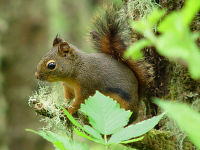


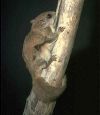


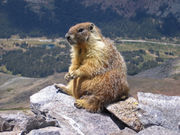
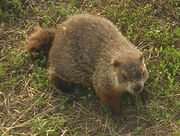




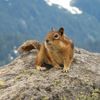
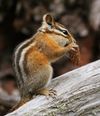






















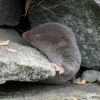









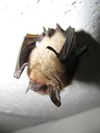





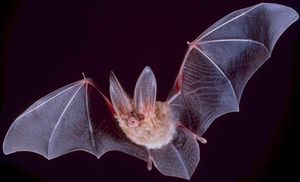
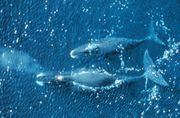
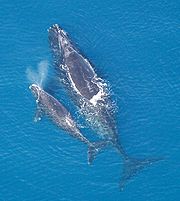
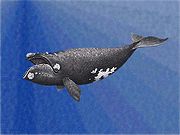
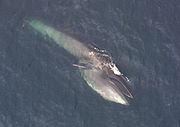
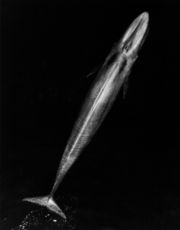

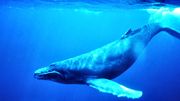

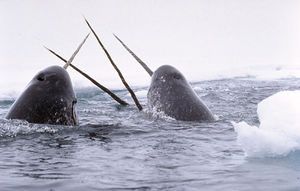
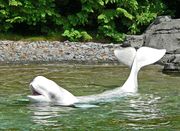




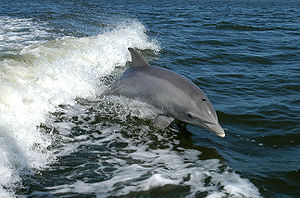
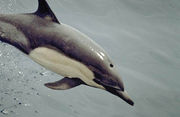


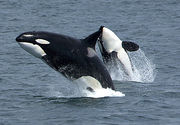
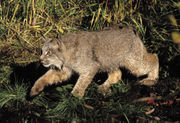
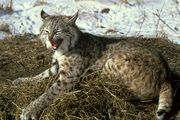


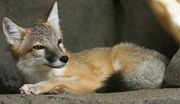
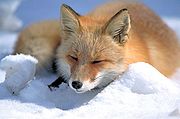
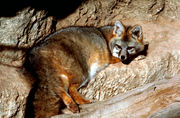
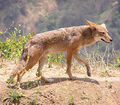



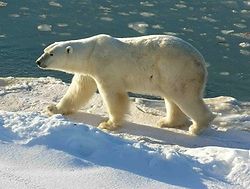
_1.jpg)


.jpg)


.jpg)

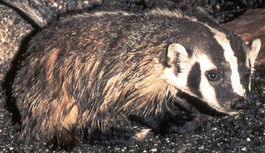
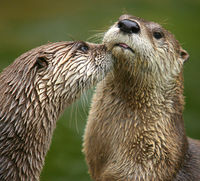







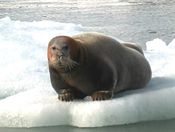


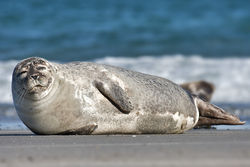


.jpg)

